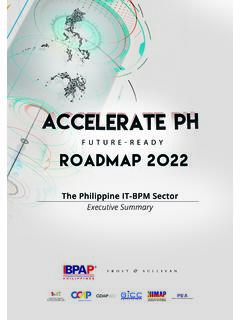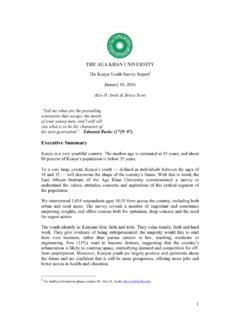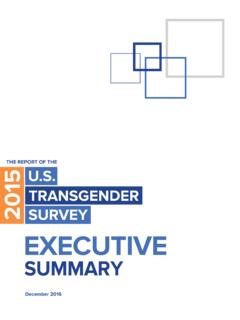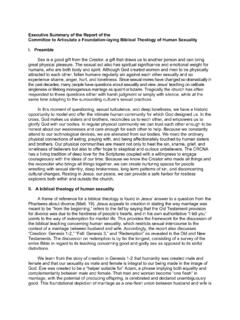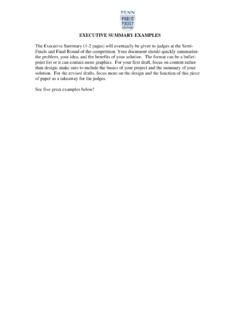Transcription of Executive Summary Future Consumer 2022 - WGSN
1 Executive SummaryBy Andrea Bell, Director of WGSN InsightFutureConsumer2022 Carla Buzasi,Managing Director, WGSNThe world is shifting at an unprecedented pace. Trends that WGSN predicted to develop throughout the next decade have accelerated and become part of our lives in a matter of weeks. From above-the-keyboard dressing to the home hub, we are incorporating new habits and new ways of living and working at speed. At WGSN, we re used to seeing our long-term forecasts come to life quickly, but never at this coronavirus pandemic is the biggest global driver of change seen for a long time, resulting in the evolution of numerous Consumer attitudes. Industries are being pushed to adapt, as we re faced with a reality that demands from people and businesses alike flexibility, resilience and, above all, has shown us that at times of great crisis, great innovation can flourish, and I m convinced that the designers, creators, strategists, marketers, buyers and executives that live within the WGSN community will rise to this challenge like never this crisis is through, we know we will emerge into a different world, which means the products and experiences we now set our minds to creating will also have to be different.
2 We won t be in lockdown forever, but the way we work, live and play won t ever be quite the same that scenario, understanding what people will still want to buy, and how to create the right products in light of that, is more important than ever. There are obviously short-term products that people need now they re working from home, but there will also be an impact on the things we need and want in the near and mid-term are reimagining what consumers will want, what brands can and should create, and how we will live in a post-Covid-19 world. The common thread? We are all, regardless of the industry we work in, designing for a new kind of these uncertain times, it s not just brands and businesses who face challenges; societal shifts impact each and every one of us.
3 As we navigate these rapid changes, one thing that will remain the same is the importance of human connection. That doesn t falter in a rapidly changing WGSN, our job has always been to analyse the signals of change and the impact they will have on the Future . We see that today s events are already reverberating into new Consumer sentiments and behaviours. And even as we rely on digital connectivity to survive this time of turbulence, it s our need for human connection that will truly shape our yearly Future Consumer forecast tracks how people will think, feel and behave by this seems a far Future , if there s anything we can learn from the current situation it s that the Future will come faster than we ve read the headlines around 5G transforming the speed of connectivity.
4 The hype surrounding driverless transport dominates watercooler conversation (hyperloop, anyone?), and seemingly no one can remember the last time a business conference failed to have a panel on the Fourth Industrial Revolution. Technology, both literally and figuratively, is all around us. Society s shift to a connected decade will solidify in 2022. By then, according to Ericsson s 2019 Internet of Things forecast, there will be around 29 billion connected devices globally, which will be three times the human population. 5G will be largely deployed in developing countries and 75% of the world s population will have internet access. But what good is speed if the internet highway is congested? Don t worry, Wi-Fi 6 is just around the corner, promising to massively boost users internet access in high-traffic areas without compromising the battery life of their devices.
5 While our speed to connectivity rises, expect to see higher rates of digital emotional contagion a behavioural trait in which people mimic the feelings of those around them. In a digital age, these feelings are transmitted rapidly on a If our minds are being fed by our social feeds, we need to be careful of what we re digesting. 2020has been heralded as the dawn of the connected decadeglobal scale. A meme sent round the world may result in global laughter. An image of a burning rainforest can spark outrage. How will these technological shifts transform our daily lives? Our annual Future Consumer whitepaper analyses the macroeconomic and societal drivers set to understand how Consumer desires and spending powers will evolve. This research is layered with the emotional sentiments that are set to have the greatest impacts on Consumer mindsets.
6 WGSN s proprietary blend of demographic analysis (who your buyer is) and psychographic research (why are they buying?) is distilled into three Consumer groups set to drives sales and engagement in 2022. Aligning with these mindsets will be the difference between growth and out more information on how WGSN can help your business this Executive Summary , WGSN Insight highlights four Consumer sentiments: Fear, Desynchronised Society, Equitable Resilience and Radical four global behavioural drivers will impact Consumer mindsets and result in three Consumer profiles: The Stabilisers, The Settlers and The New Optimists. The Stabilisers are prioritising stability across all aspects of their lives in reaction to desynchronisation and feelings of chronic uncertainty.
7 They want simplified retail experiences, calm commerce, and a reassuring relationship with Settlers are desperate to redefine the global hustle hard work cycle. They are looking to plant roots in their community, but not settle in their careers, and they re ushering in a new era of localism. Weighed down by rising levels of fear and anxiety, The New Optimists have a vivacious appetite to embrace joy a brave choice in the face of uncertainty. In 2022, a key thread among all these cohorts is that despite our reliance on digital connectivity, it s our need for human connection that will truly shape our lives. Before we introduce the key Consumer groups for 2022, we need to understand the inputs that are shaping their daily lives. What are their challenges and opportunities and how can companies create products and services that will react to these diverse needs?
8 WGSN s global research teams have segmented the four largest global sentiments. Taking a considered approach to these overarching shifts will inform how business leaders innovate to remain relevant, in what is likely to be an increasingly challenging MatrixConsumer sentimentsConsumer profilesTheStabilisersThe NewOptimistsTheSettlersFearEquitable Despite strong economic growth in many countries, 2019 saw a rising tide of financial fears Contagion The Fear FloodWhy, for many regions that are levelling out and seeing stable economic growth, are financial fears rising? The short answer is that emotional contagion is a behavioural trait in which people mimic the feelings of those around them. Thanks to the digital age, we rapidly transmit these feelings on a global research study on emotional contagion and online virality found that the most-emailed New York Times articles in a three-month period were ones that evoked what are called high-arousal emotions such as awe, anger and quick glance at a daily news feed (political unrest, environmental crises and fluctuating economies) and it s little surprise that fear is on the rise globally.
9 During the research phase for this paper, fear was the overwhelming sentiment from our 13 regional teams analysis. Fear is not only a global unifier, it has become a demographic one as well. Eco-anxietyA chronic feeling of worry about the impact of global warming is rising and it s not just a Western sentiment. A 2019 WGSN climate survey found that 90% of global respondents said the thought of a climate crisis made them feel uneasy about their UncertaintyIt s been over a decade since the 2008 global financial crisis and the shockwaves are still Though the manifestations of fear differ slightly for each generation, there are commonalities that are impacting all ages the two largest being environmental and financial uncertainty. Consumer news, but it s no longer done at 7pm, after work, at home in front of the desynchronisation plays a role in the breakdown of communities due to the lack of consistent human interaction.
10 Commuting, going to the post office, gym time, grocery shopping these were once reliable, scheduled community moments that are disappearing at accelerated rates. And with the loss of these daily interactions, communities are same technological advancements that offer record levels of convenience (24-hour food delivery, same-day shipping) and productivity (global workforces, flexible offices) have resulted in a desynchronised desynchronised society is one where people continue to do many of the same things but no longer do them at the same time as others. The time-space paths of individuals are more variable and spread. People still work as much (or more) but the standard nine-to-five, five-day work week has lost its dominance. People still read or watch In uncertain times, people crave stability and a sense of routine, and yet it seems society is getting the seems that in 2020, there is more to be angry and fearful about than celebrated.
